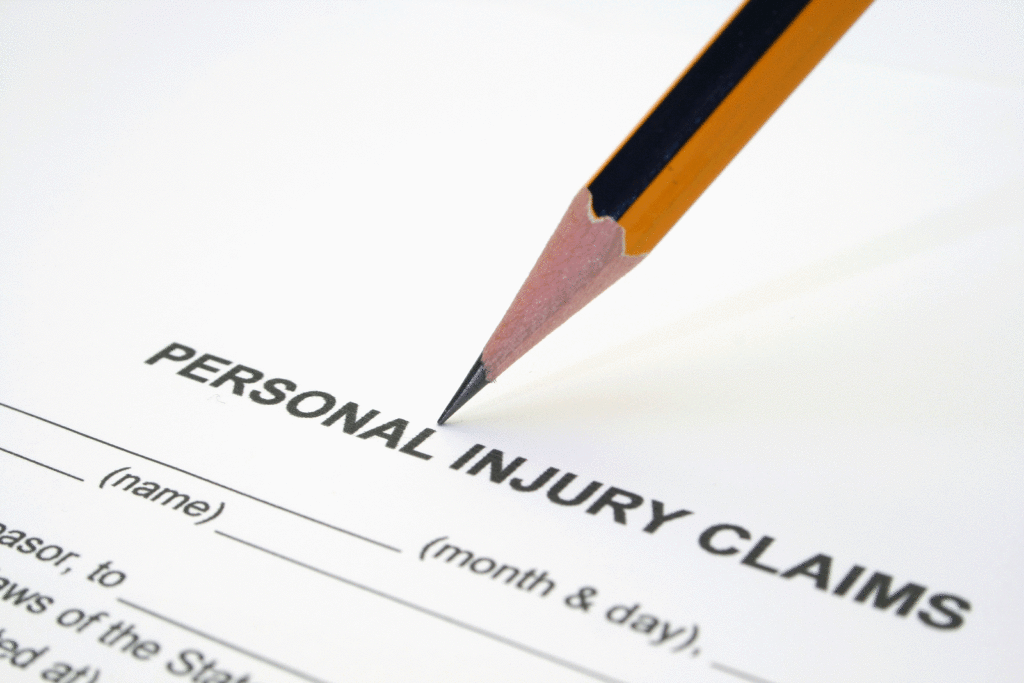Now Reading: 5 Everyday Things You Do That Could Land You in the Hospital
-
01
5 Everyday Things You Do That Could Land You in the Hospital

5 Everyday Things You Do That Could Land You in the Hospital
You go about your day, doing the same things over and over. It feels safe and normal. But hidden in these routines are risks.
These everyday actions might seem harmless but could lead to unexpected injuries or health issues. The National Safety Council (NSC) reports that there were 128,800 fatalities in 2022 due to preventable home injuries. Furthermore, over 36 million injuries were treated, and the death rate per 100,000 population crossed 38.5.
Understanding the risks associated with common household tasks can help you avoid trips to the hospital. This blog post mentions five everyday activities that could land you in the ER and how to stay safe.
#1. Improper Use of Cleaning Products
Your cleaning cabinet might be hiding some dangerous combinations. Mixing common household cleaners can create toxic fumes or chemical reactions.
Did you know, combining bleach and acid, or ammonia, produces chlorine gas? Sodium hypochlorite is a major component of bleach. It is highly reactive and if exposed to other chemicals, can create new toxic chemicals.
Business Insider reveals that when ammonia reacts with chlorine, it creates chloramines. This compound can cause severe breathing problems, chest pain, and lung damage.
Another similar example is OxyCide, a hospital-grade cleaning agent consisting of peracetic acid and hydrogen peroxide. Consumer Safety Watch states that this cleaner is linked to anaphylaxis, breathing issues, skin burns, and other major injuries among healthcare workers. Symptoms include coughing, wheezing, and breathing troubles. In addition, the longer the exposure, the more severe the symptoms.
The affected individuals sued Ecolab, Inc., the manufacturer of OxyCide, for providing an improperly diluted product and inadequate warnings. In such cases, consumers can pursue accident compensation claims due to short and long-term health impacts.
Frantz Law Group reveals that product liability/defective product claims help the victims obtain financial relief for the harm sustained. To protect yourself from such incidents, always read labels carefully and follow the safety guidelines when using any cleaning product. Here are some safety tips you should follow:
- Use one product at a time
- Ensure good ventilation when cleaning
- Wear gloves and protective eyewear
- Store cleaning products in their original containers
#2. Mishandling Kitchen Tools
The kitchen is full of potential hazards. Handling sharp knives, cheese graters, hot stoves, or powerful appliances like blenders can result in serious injuries. You might cut yourself while chopping vegetables or burn your hand while reaching for something on the stove.
These types of kitchen injuries are a leading cause of emergency room visits, with cuts, lacerations, burns, and puncture wounds being the most common. Even experienced home cooks are not immune to these accidents. According to Snibbs, slips, trips, falls, spilled liquids, repetitive motion injuries, broken crockery, blender injuries, and fires are other common kitchen accidents.
To avoid kitchen mishaps:
- Keep knives sharp (dull knives are more slippery)
- Use protective gloves when using graters or mandolins
- Pay full attention while cooking (no multitasking!)
- Ensure appliance cords are nowhere near hot surfaces or water
- Always unplug appliances before cleaning or after usage
#3. Distracted Walking
You’ve seen them – people glued to their phones, oblivious to their surroundings. In the age of smartphones, distracted walking has become a popular source of accidents. Many people are glued to their phones while walking, texting, or scrolling through social media.
Unfortunately, this distraction leads to trips, falls, and, in more severe cases, collisions with vehicles. The NY Times reveals that distracted walking incidents have increased over the last few years. The risks are real, from walking into a pole to entering traffic to resulting in inattentional blindness. Another downside is that distracted walking also affects your gait and posture.
Cities like Fort Lee, Honolulu, New Jersey, Rexburg, and Stamford have all banned texting while walking. To stay safe:
- Set aside “phone-free” times during your commute
- Use hands-free options if you must use your phone while moving
- Stop and step aside if you need to send a message or check notifications
Remember, no text is worth a trip to the ER.
#4. Sitting for Prolonged Periods
Sitting may not seem dangerous, but sitting for extended periods—whether at your desk, in the car, or on the couch—can have serious health consequences.
Long stretches of inactivity can give rise to blood clots, deep vein thrombosis (DVT), and back pain. DVT is when a blood clot forms in a deep vein, usually in the legs. If not addressed, it can result in fatal complications. Moreover, CNN reveals that excessive sitting increases the odds of several chronic diseases and early death.
To avoid these risks:
- Take regular breaks to stand and stretch
- Make a habit of using a standing desk
- Set reminders to move every hour
- Do simple exercises at your desk, like leg raises or ankle rotations
Remember, people who sit for over 8 hours a day without physical activity have a similar risk of dying as smokers or obese people. Don’t let your desk job or Netflix binge become a health hazard. Remember, movement is key to preventing the dangerous effects of a sedentary lifestyle.
#5. Slipping in the Shower or Bathtub
It might sound surprising, but one of the most common ways people end up in the hospital is by slipping in the bathroom. Showers and bathtubs, with their wet and slippery surfaces, are prime spots for accidents.
Wet, slippery bathroom surfaces cause over 230,000 injuries annually in the US. These accidents often result in serious harm, from bruises to broken bones and concussions. Elderly adults are particularly vulnerable, but anyone can take a fall if they’re not careful. According to the Centers for Disease Control and Prevention (CDC), over 25% of older adults experience a fall every year.
Moreover, the NSC reports that in 2022, preventable falls caused about 50,000 senior fatalities (age 65 and older). In addition, over 3.5 million older adults were admitted to the ER. To make your bathroom safer:
- Install non-slip mats inside and outside the tub
- Add grab bars for support
- Opt for a shower chair if you have mobility issues
- Ensure proper lighting in the bathroom
Don’t overlook the risks of rushing through your morning routine. Take your time and stay alert. Older adults or those with mobility issues should consider a walk-in shower or tub. Remember, a split-second awareness is enough to avoid a painful fall. These simple changes will significantly reduce your risk of a bathroom-related injury and keep your daily hygiene routine safe.
Frequently Asked Questions
Q1. How Often Should I Replace Common Household Safety Items?
Replace smoke detector batteries annually and the entire unit every 10 years. Change fire extinguishers every 12 years. Swap out carbon monoxide detectors after 5–7 years. Ensure you use first-aid supplies before expiration dates and replace them if expired.
Q2. How Can I Ensure My Home Is Safer for Seniors?
First, eliminate tripping hazards like unfastened flooring. Install handrails on staircases and in bathrooms. Improve lighting, especially in hallways and on stairs. Consider a medical alert system for emergencies. Regular check-ins and assistance with home maintenance tasks can also significantly improve safety.
Q3. What Are Some Ergonomic Tips for a Home Office Setup?
Ensure your screen is at eye level and arm’s length away. Use a chair with good lumbar support. Keep your keyboard and mouse at elbow height. Take regular breaks to stretch and move. Consider using a standing desk converter for varied postures throughout the day.
Everyday activities don’t have to be dangerous. You can reduce your chances of ending up in the ER by remaining aware and taking simple precautions. Moreover, small changes can make a big difference, from being mindful in the kitchen to creating a safer bathroom.
Remember, prevention is always better than a hospital visit. Stay safe by being mindful of these hidden risks in your daily routine. A little caution goes a long way toward keeping you and your loved ones healthy and out of the hospital.










